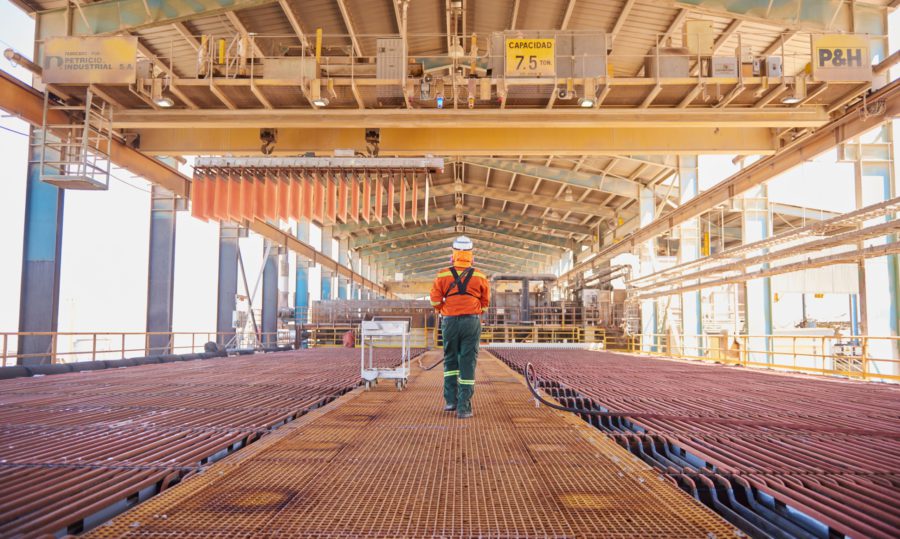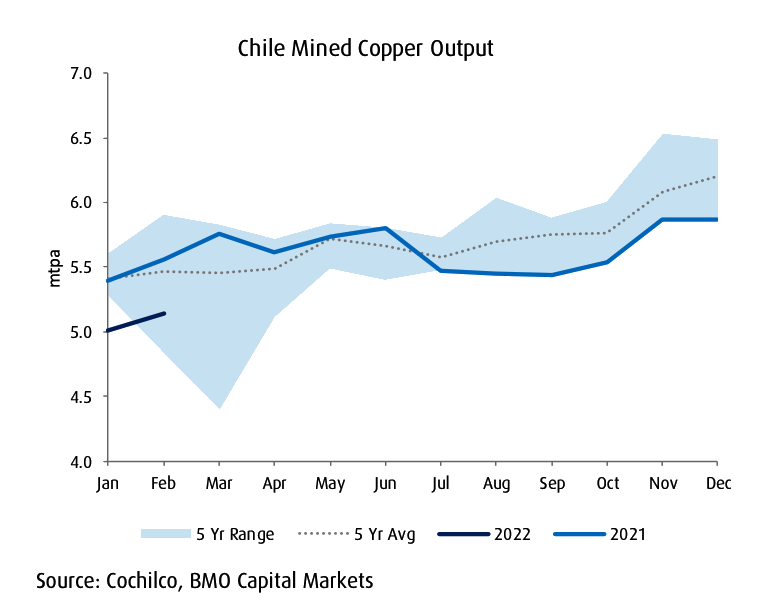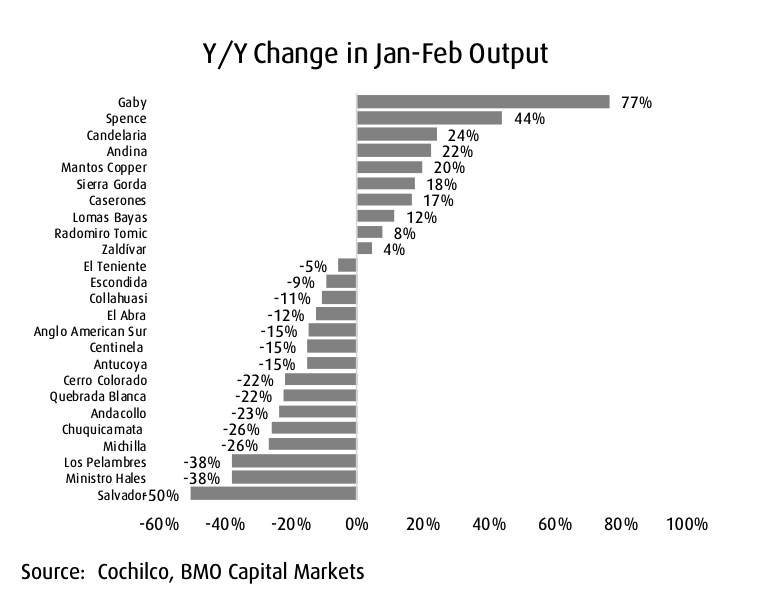
https://www.mining.com/chile-heads-towards-two-lost-decades-of-copper-output-growth/
Chile’s crown as the world’s largest producer of copper is at risk as the country’s output continues to be lower than expected despite the billions of dollars invested in new projects in the past 18 years, BMO’s Colin Hamilton warned on Thursday.
Chile’s January copper production spooked investors, as it fell 7.5% from the same month in 2021 to 425,700 tonnes — the lowest in 11 years.
Lower ore quality, water scarcity and other transitory near-term issues were the reasons given by state Chilean Copper Commission (Cochilco) for the sharp drop. For Hamilton, however, the production decline is far from being an unusual occurrence.
BMO estimates the country’s 2022 copper production is on track to being lower than in 2004, when the nation churned out slightly over 5.4 million tonnes of the metal, equivalent to 37% of the world’s production.

“Following the steady ramp-up in the 1990s and early 2000s, output levels have stagnated, with the projections of 6 million tonnes per year-plus of output never coming to pass,” Hamilton wrote.
Diego Hernández, president of Chile’s National Mining Society (Sonami), remains optimistic. The former chief executive of state-owned Codelco and Antofagasta Plc (LON:AAL) has said he expects the nation’s output to rise in 2023, as Teck Resources (TSX: TECK.A | TECK.B) (NYSE: TECK) brings the expansion of its Quebrtada Blanca mine on stream in the second half of this year.
There’s a dearth of other major developments in the pipeline, Hernández said in March, adding that once there is greater legal and regulatory certainty, investment should pick up.
Old mines
Chile’s output issues are not just a matter of investment in the new projects and expansion, but rather a consequence of aging existing assets, Hamilton said.
“Most notably, SX-EW [cathode copper] production in Chile continues to trend inexorably lower, and is now ~500kt below peak levels seen over a decade ago,” the analyst wrote.
“Rather than the short-term production issues, the potential for Chile’s output to keep undershooting expectations is more important from an investment thesis standpoint,” he added.
Copper futures on the Comex in New York have been trading at a premium to those on the London Metal Exchange in recent weeks, attracting more copper cathode, especially from South America.

US imports of cathode from Chile climbed 37% in the first three months of this year from the prior quarter, according to data from S&P Global.
Chile’s constituent assembly is proposing a series of changes to the Constitution to replace a market-centric one that dates to the military dictatorship of General Augusto Pinochet.
Those modifications could affect miners as it may open the door to nationalizing some of the world’s biggest copper and lithium assets.
Politicians are also fine-tuning a new mining royalty bill, which will raise tariffs on firms based on gross sales and profitability.
No comments:
Post a Comment